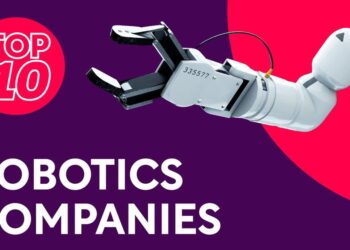Estonia is advancing its digital governance capabilities with a bold initiative to develop a new cross-government, AI-powered data management system. The move aims to streamline public sector data handling and enhance interoperability across various government agencies. As a pioneering digital nation, Estonia’s latest project underscores its commitment to leveraging artificial intelligence to boost efficiency, security, and decision-making in the public sector-a development closely watched by defense and technology communities alike.
Estonia Advances Ambitious AI-Driven Cross-Government Data Platform to Enhance National Security
Estonia is spearheading a groundbreaking initiative to build a state-of-the-art cross-governmental data platform, leveraging artificial intelligence to optimize national security efforts. This system is designed to integrate classified and open-source information, enabling real-time analytics and predictive insights across multiple government agencies. By breaking down traditional data silos, the platform promises to enhance coordination and responsiveness in security operations, while maintaining rigorous data privacy and cybersecurity standards.
Key features of the platform include:
- AI-powered threat detection: Automated scanning and identification of emerging security risks.
- Federated data sharing: Secure and controlled access to sensitive datasets across departments.
- Scalability and adaptability: Modular architecture built to evolve with Estonia’s growing digital infrastructure.
- Advanced encryption protocols: Ensuring data integrity and protection against cyber attacks.
| Capability | Benefit | Status |
|---|---|---|
| Real-time analytics | Faster decision making | In development |
| Cross-agency dashboards | Unified situational awareness | Prototype stage |
| Automated data classification | Improved data handling | Testing phase |
Integrating Artificial Intelligence in Public Sector Data Management Presents Strategic Opportunities and Challenges
Estonia’s initiative to harness AI for cross-government data management marks a significant evolution in public sector efficiency and transparency. By deploying intelligent algorithms, the system aims to automate data classification, enhance predictive analytics, and streamline interagency information sharing. This approach not only fosters a unified digital infrastructure but also promises to reduce bureaucratic delays, improve decision-making processes, and strengthen cybersecurity protocols through real-time threat detection.
However, the integration of AI across government agencies is not without hurdles. Key challenges include ensuring data privacy, mitigating algorithmic biases, and establishing robust governance frameworks that enable accountability. The government must also tackle interoperability issues between legacy systems and new AI technologies while investing in workforce upskilling to manage and maintain these advanced data assets effectively. The following table outlines some primary strategic opportunities and corresponding challenges in this transformative effort:
| Strategic Opportunities | Associated Challenges |
|---|---|
| Efficient Resource Allocation Optimizing budget and staffing through predictive data models. | Data Privacy Concerns Balancing transparency with citizen confidentiality and legal compliance. |
| Enhanced Interagency Collaboration Seamless sharing of data across departments to improve public services. | System Interoperability Integrating AI with diverse legacy platforms and standards. |
| Proactive Risk Management Using AI to identify and respond to emerging threats quickly. | Algorithmic Bias Preventing discriminatory outcomes in automated decisions. |
Experts Recommend Robust Privacy Frameworks and Interagency Collaboration to Maximize AI Data Asset Effectiveness
Leading voices in the AI sector emphasize that the success of Estonia’s ambitious government-wide data asset initiative hinges on building rigorous privacy safeguards. They stress that privacy frameworks must not only comply with existing regulations like GDPR but also anticipate evolving technological risks. This includes implementing advanced encryption methods, access controls, and continuous monitoring systems to ensure data integrity and prevent unauthorized usage.
Equally critical is fostering cross-agency cooperation, which experts identify as a cornerstone for unlocking the full potential of AI-powered data management. Effective interagency collaboration can drive data standardization, avoid silos, and promote real-time insights that enhance decision-making across defense and civil sectors. The following table outlines the key components recommended for maximizing data asset effectiveness:
| Component | Description |
|---|---|
| Privacy by Design | Embedding privacy into system architecture from the outset |
| Data Sharing Protocols | Defined rules to enable secure interagency exchange |
| AI Governance Board | Multi-disciplinary oversight ensuring ethical AI use |
| Regular Audits | Continuous assessments to identify vulnerabilities |
| Training Programs | Upskilling staff to responsibly handle AI data assets |
In Summary
As Estonia advances its efforts to integrate AI-driven solutions across government data management, this initiative underscores the country’s commitment to leveraging cutting-edge technology for enhanced security and efficiency. By pioneering a cross-government asset powered by artificial intelligence, Estonia positions itself at the forefront of digital innovation in public administration. Observers will be watching closely as the project unfolds, potentially setting new standards for data stewardship and interagency collaboration in the defense sector and beyond.
















